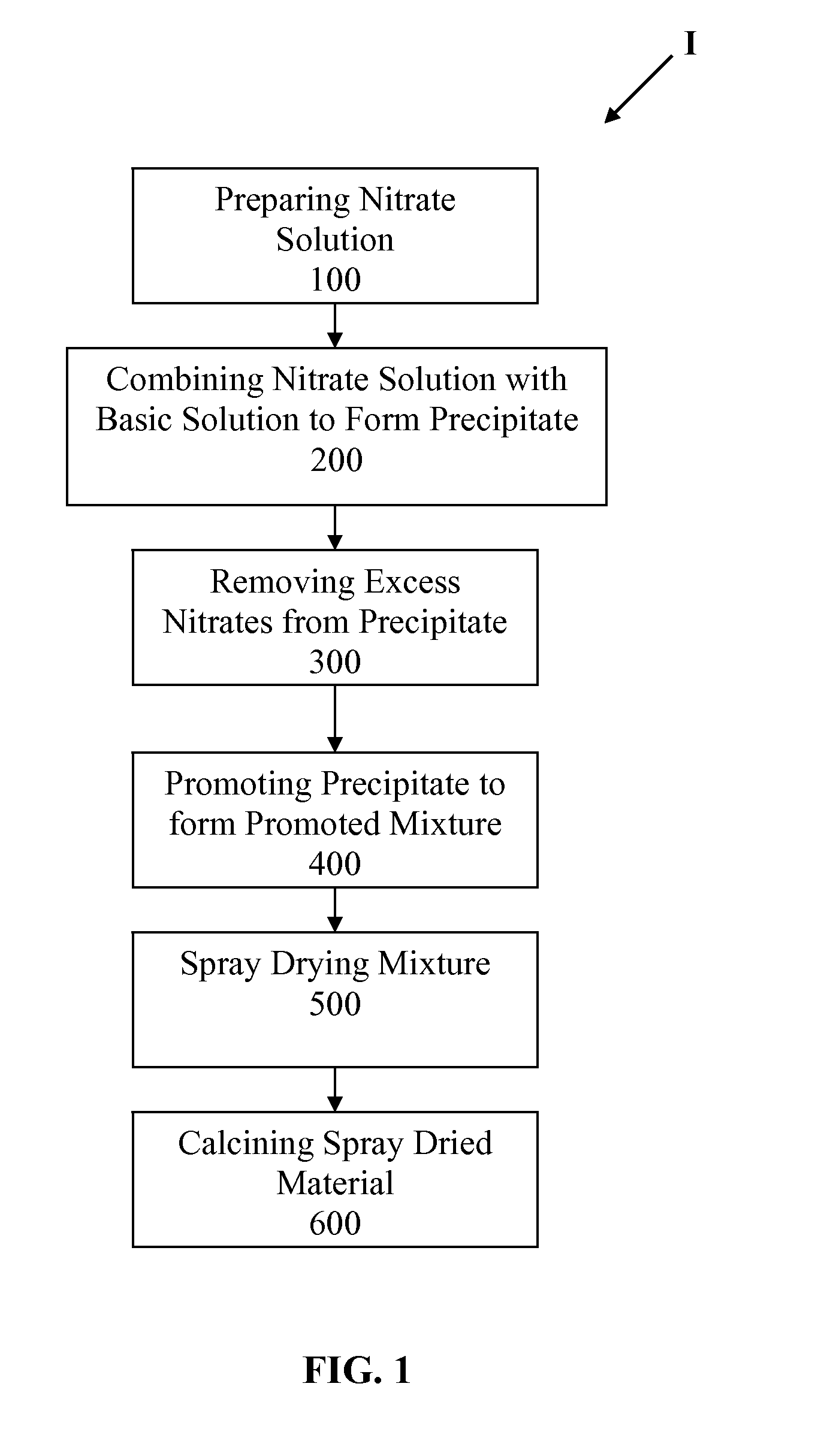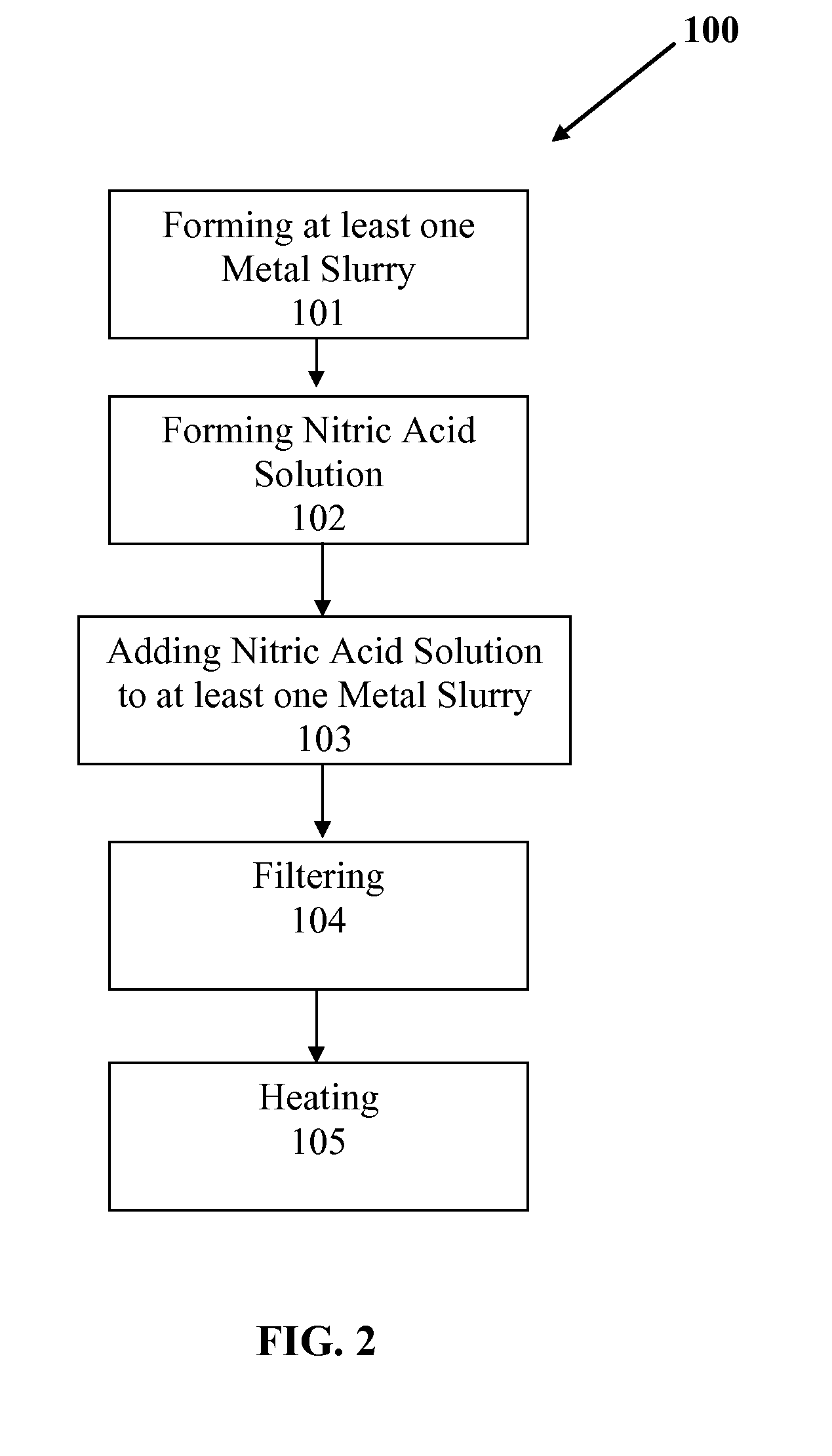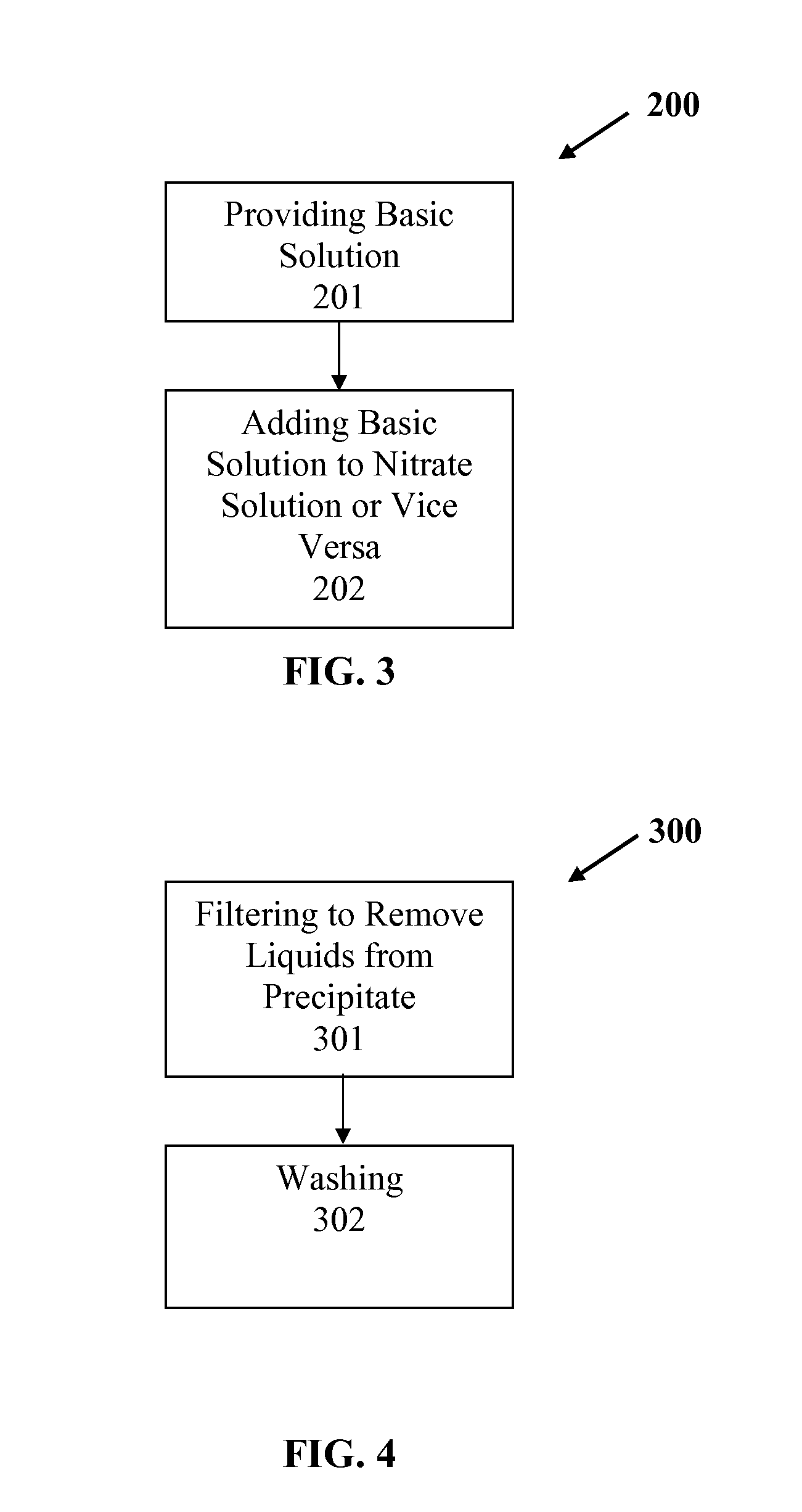Slurry bed fischer-tropsch catalysts with silica/alumina structural promoters
a technology of structural promoters and slurry bed, which is applied in the field of catalysts, can solve the problems of particle breakage, small catalyst particles, and small and achieve the effect of reducing the number of catalyst particles, and reducing the size of initial catalyst particles
- Summary
- Abstract
- Description
- Claims
- Application Information
AI Technical Summary
Benefits of technology
Problems solved by technology
Method used
Image
Examples
example 1
Catalysts Formed Using Iron-Copper Nitrate, Ammonium Hydroxide, and Various Sources of Silica
[0072]Supported attrition resistant iron-based Fischer-Tropsch catalysts promoted with copper and potassium were formed using elemental iron as starting material. The experimental steps used in manufacturing the catalyst are listed hereafter and further described hereinbelow. The basic steps comprised: (1) preparation of iron and copper nitrate solution; (2) preparation of ammonium hydroxide solution; (3) preparation of promoter gel, (4) precipitation, (5) washing, (6) addition of promoter gel, (7) drying and sizing, and (8) calcining A list of the catalysts produced is provided in Table 1.
[0073]Reagents: The basic components or reagents used in the manufacturing process include: (1) Iron Powder, Fe (Hoganas, 98.61% Fe, −325 mesh), 80.744 g, (2) Copper Metal, Cu (Alfa Aesar, 99.5% Cu, −40+100 mesh), 1.600 g, (3) Potassium Hydroxide, KOH (Sigma Aldrich) 9.900 g, 45 wt. % in water, (4) Nitric ...
example 2
Catalysts Formed Using Iron-Copper Nitrate, Sodium Carbonate, and Various Sources of Silica
[0102]Supported attrition resistant iron-based Fischer-Tropsch catalysts promoted with copper and potassium were formed using elemental iron as starting material. The experimental steps used in manufacturing the catalyst are listed hereafter and further described hereinbelow. The basic steps comprised: (1) preparation of iron and copper nitrate solution; (2) preparation of sodium carbonate solution; (3) preparation of promoter gel, (4) precipitation, (5) washing, (6) addition of promoter gel, (7) drying and sizing, and (8) calcining A list of the catalysts produced is provided in Table 2.
[0103]Reagents: The basic components or reagents used in the manufacturing process include: (1) Iron Powder, Fe (Hoganas, 98.61% Fe, −325 mesh) 86.6 g; (2) Copper Metal, Cu (Alfa Aesar, 99.5% Cu, −40+100 mesh) 4.35 g; (3) Potassium Hydroxide, KOH (Sigma Aldrich) 9.90 g 45 wt. % in water; (4) Nitric Acid, 70% (...
PUM
| Property | Measurement | Unit |
|---|---|---|
| Time | aaaaa | aaaaa |
| Percent by mass | aaaaa | aaaaa |
| Particle size | aaaaa | aaaaa |
Abstract
Description
Claims
Application Information
 Login to View More
Login to View More - R&D
- Intellectual Property
- Life Sciences
- Materials
- Tech Scout
- Unparalleled Data Quality
- Higher Quality Content
- 60% Fewer Hallucinations
Browse by: Latest US Patents, China's latest patents, Technical Efficacy Thesaurus, Application Domain, Technology Topic, Popular Technical Reports.
© 2025 PatSnap. All rights reserved.Legal|Privacy policy|Modern Slavery Act Transparency Statement|Sitemap|About US| Contact US: help@patsnap.com



